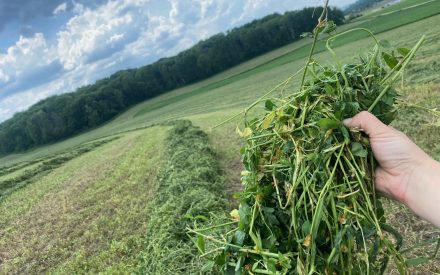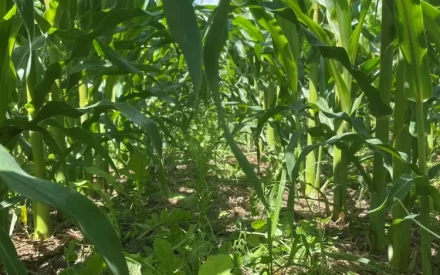General Comments
The other brassica are fairly similar to radishes but with less root volume. Turnips will have more tuber-like growth at the soil surface and are better suited to late summer and fall grazing. Turnips may over-winter and do not produce the odors of radish upon decomposition. Rapeseed, also known as canola, has typically been grown as an oil crop but has grown in popularity as a cover crop in recent years.
Radishes, and other brassicas, release bio-toxic metabolites upon decomposition in soil, which have shown modest suppressive effects on certain weed, insect and parasitic nematode pests. These chemical compounds include glucosinolate and biologically active sulfur containing thiocyanates, which are also associated with the sulfurous odor given off by radishes during decomposition. Radishes have been shown to be good scavengers of residual soil nitrate. Radish will produce seed, causing a weed concern, if planted too early in the season (July). Radishes are fast growing with competitive, leafy top growth. Mixes must consider compatible species and modest radish seeding rates. Radish and radish mixtures require 40 to 60 lbs N from fertilizer, manure or legume credits.
Planting specifications
Seeding rate:
It is not recommended to seed brassicas alone due to erosion concerns so these are recommendations for mixes. The following are radish seeding recommendation, rapeseed should planted at seeding rates similar to radish, turnips should be about half (2-4 lbs. per acre in a mix).
- Radish, 5 to 8 lbs per-acre + 30 lbs per-acre oats or spring barley.
- Radish, 5 to 8 lbs per-acre + 35 lbs field peas + 30 lbs per-acre oats or spring barley
- Radish, 5 lbs per-acre + 8 lbs berseem clover + 10 lbs annual ryegrass
Seeding depth: Drill 1/2″
Fertility needs: 40-60lbs of N
Management and termination
None needed for turnips, will winterkill in Wisconsin.
Rapeseed may overwinter and need spring termination. Termination may require at least one quart/acre of glyphosate and/or multiple applications.
In a cover crop mix
Brassicas are only recommended in mixes, seed seeding rates above.


 Seven unique factors of first-cut alfalfa
Seven unique factors of first-cut alfalfa The Cutting Edge Podcast Episode 1: Industrial Hemp
The Cutting Edge Podcast Episode 1: Industrial Hemp Field Notes Episode 1: Interseeding
Field Notes Episode 1: Interseeding ▶ Watch: Wisconsin Ag Climate Outlook Oct. 9
▶ Watch: Wisconsin Ag Climate Outlook Oct. 9


